So, a coin that has gotten a load of attention recently in the cryptosphere is one that’s called ‘Nucleus Vision.’ It’s abbreviated cash tag is nCash.
When asked about it prior, there was not too much information about it, its origins or what the coin did. So, the author wanted to conduct a thorough, objective review of the coin before passing any judgment on the merit of the cryptocurrency as an investment.
Disclaimer: the author not a financial advisor, and this piece should not be considered to be investment advice. Anything stated in this article apart from objective; verifiable facts should be considered opinion and opinion alone. You are ultimately responsible for your own investment decisions. Thanks!
Introduction
So, the first place that the author went to find out more information about the coin was their website.

Screenshot from the homepage of the Nucleus Vision website.
So, at first glance, the author notices that Tim Draper’s name is listed as a ‘backer.’ This initially put the author off because of his involvement with the failed Tezos ICO, which imploded in unprecedented fashion, as well as his involvement with Bancor, which has failed to live up to any of the hype that it generated during its ICO sale.
However, as stated above, the author wants to give nCash an objective overview, so I have no assumptions/expectations at this point for what the coin can provide.

As we scroll down, we see the picture above on the front page.
Thus far, it seems this coin has a rather impressive background. It is allegedly trusted by 100’s of brands, and they state that they were ‘founded at Harvard University.’
In entirety, they state that “Founded at Harvard University, Nucleus Vision is an IoT-based, contactless identification system that empowers retailers to identify and better serve their customers.”
Website Design
This might seem stupid to include in a coin review, but it matters. These are tech companies after all, right? So, if they don’t have a properly functioning website that’s aesthetically pleasing, then we would be right to be incredulous of their ability to manifest a much more technologically complex digital product that would gain any favor with a massive audience.
Fortunately, in this case, the website looks pretty impressive.
On to the Meat
Okay, so there’s a bigger purpose here than evaluating how pretty the website looks, so let’s dig into this project here:
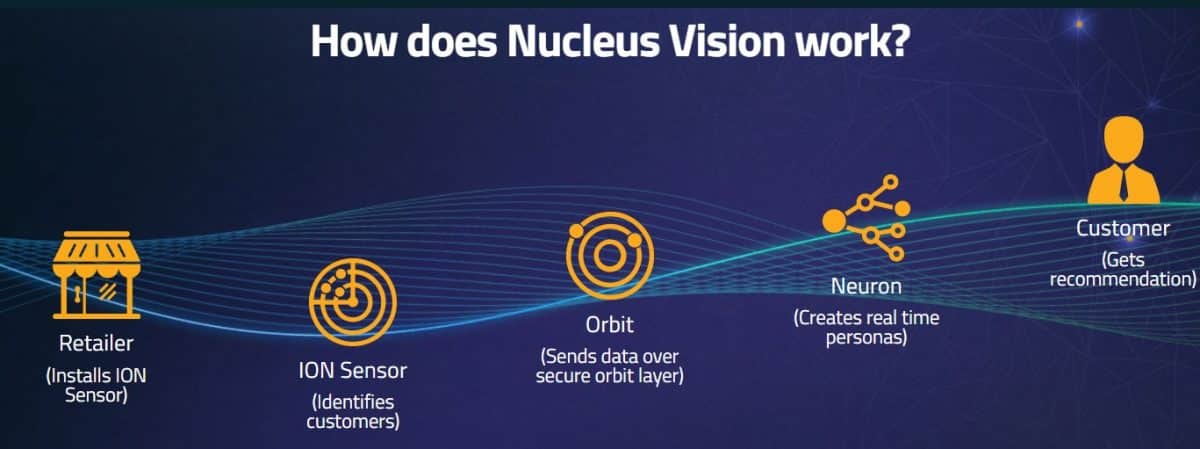
The graphic above is pretty self-explanatory although it doesn’t really give much concrete detail as to what this is and how it would be facilitated by the token itself, but that’s not an issue at this point. This is just the front page, not the whitepaper.
There was a video below, so the author decided to click on it and watch it. It’s located on the homepage! Just scroll down, and you’ll see it.
The video intros by showing your average, everyday Joe Blow staring at some texts he’s getting on his phone from some woman he’s presumably dating saying, “Looking forward to our date tonight!” From this point, the guy goes to his closet that’s full of clothes and scratches his head in disappointment. The gist here is that he needs something nice for his date with this woman.
While he’s going through this search process, there’s a narrator voicing over the video that states, “What’s the most important part of your life? Is it an object? A movement?” Not sure the relevance, but the author is just summarizing what he saw here.
Eventually, after browsing the internet and looking at random clothes online, he decides to visit a specific physical store (retailer). While there, he browses among the clothes that they have available for a few moments before one of the retail associates approaches him and asks him if he needs any help. He helps our average Joe Blow try on some selections until our guy finally figures out what he wants.
This is where the author starts getting a little lost:
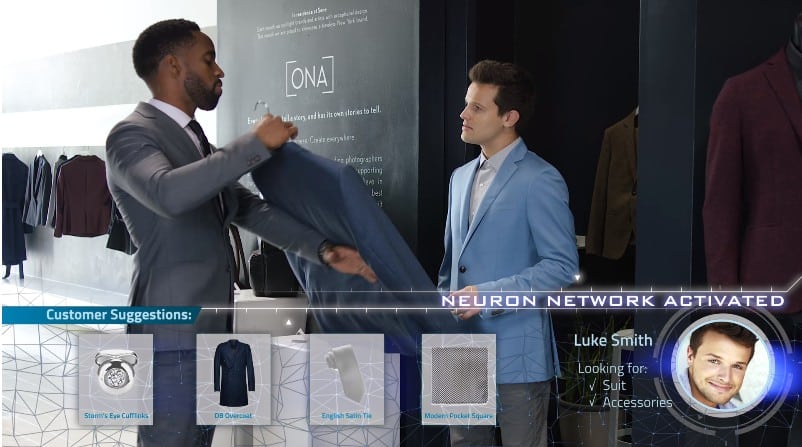
Above is a screenshot from the video. The stuff you see below just pops up while you’re watching it. We guess it is a part of the nCash technology in some way, but we do not understand what the hell we’re looking at.
How are they curating these suggestions for him? Did he visit there prior? What does ‘Neuron Network Activated’ mean? What activated it? And what’s the Neuron Network?
We’ll dig around and see if we can find those answers later.

After this pops up on the screen, the retail associate (the guy with the dark grey blazer on), says that he’ll go grab the ‘English Satin Tie,’ which you can see light up on the screenshot from the video from above.
The customer says something to the effect of, ‘Alright, that would be awesome!’
The author guesses that the gist of this part of the video is that the information that they have on this guy has allowed them to get a gist of the type of clothes/preferences he has in order to curate a list of items that they believe he would be most likely to buy.
Once again, not sure how the retail associate knew to mention the ‘English Satin Tie,’ because the customer has just walked into the store randomly (it appears). Or perhaps by suggesting the English Satin Tie and having the customer affirm that choice, the video is lighting up that option to indicate that this ‘preference’ or selection has been ‘saved.’ The preference could be stored in some sort of database where the retailer and potentially other retailers on the nCash network can save this information and use it to target our Average Joe, ‘Luke Smith,’ with future product offers.

So, this is the scene where he finally checks out. The interface you see next to our Average Joe is presumably what he’s viewing on his phone. It appears to be showing him his account balance as well as other debits and credits to his account based on rewards he’s earned from other retailers on the network and purchase that he’s made recently. Seems simple enough.

The next scene shows another interface that our Average Joe is presumably looking at on his phone, which is a total bill of $850 and also an app that shows him what the equivalent amount of that would be in nCash.
It shows him his balance and gives him the option to finalize his payment.
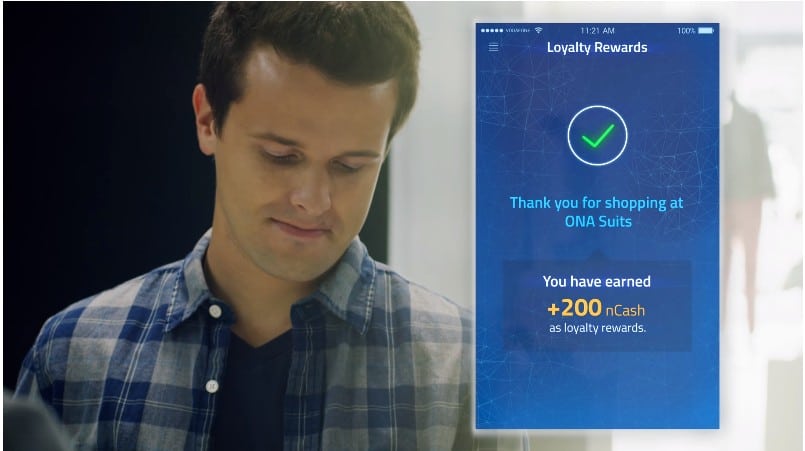
This above image shows what appears to be the final confirmation screen for our Average Joe. It looks as though his payment is confirmed and that he has now earned +200 nCash as a ‘loyalty reward.’ The author supposes that the reward of nCash, which appears to be directly conversional with actual fiat, is what is incentivizing our Average Joe to use the app in the first place. Okay, makes sense.
From this point, our Average Joe is happy with the clothes that he’s selected and he is now on his way home to get cleaned up for his date.
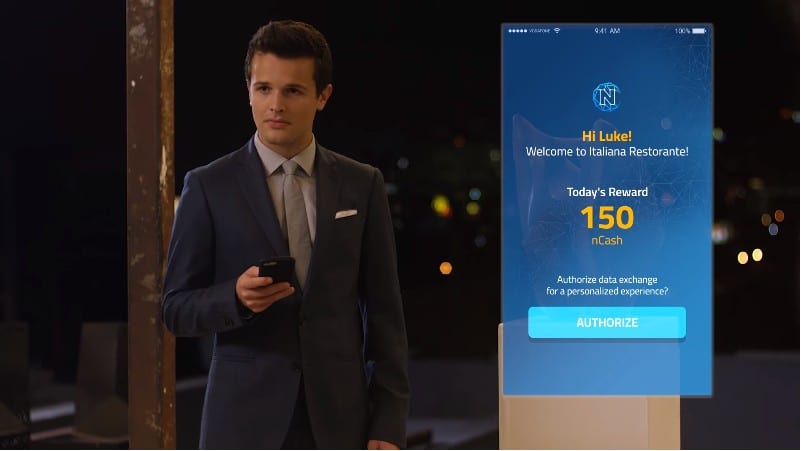
So here’s our Average Joe waiting for his date. There’s yet another alert from the app or nCash program on his phone.
It says ‘Hi Luke! Welcome to the Italiana Restorante!’
It then shows ‘Today’s Reward’ of ‘150 nCash.’
Then it asks “Authorize data exchange for a personalized experience?” with a big Authorize button below.
The author is not sure what that means at all, what reward he’s receiving or why he’d need to authorize a reward, or if that’s what’s actually going on. The narrator on top of the video is still asking random existential questions like, ‘What’s your passion in life? What makes you happy?’ etc.

Next screenshot here is the immediate next scene. We drew a box around the woman that appears to be our Average Joe’s date for the evening. It appears pretty obvious that she is his date based on the camera perspective, her ambling movements, and prolonged cautious surveying of the room continuously as if she’s trying to locate a specific individual.

Look at the smile on this guy’s face. Looks like he’s confident about tonight!

They’ve met! They both look excited. It looks like this date is going to be great! [Sidenote or not so sidenote: This looks like an art exhibit/networking meeting of some sort and not an Italian restaurant, so what the hell was that last notification on his phone about?]

The video concludes with the Nucleus symbol and their catchphrase/slogan, ‘Connecting the Unconnected.’
Additional Information:
So, when going through this video the first time, it appears that we missed a few details that explained the interaction that our Average Joe had with the retail associate when he walked into the clothing store.
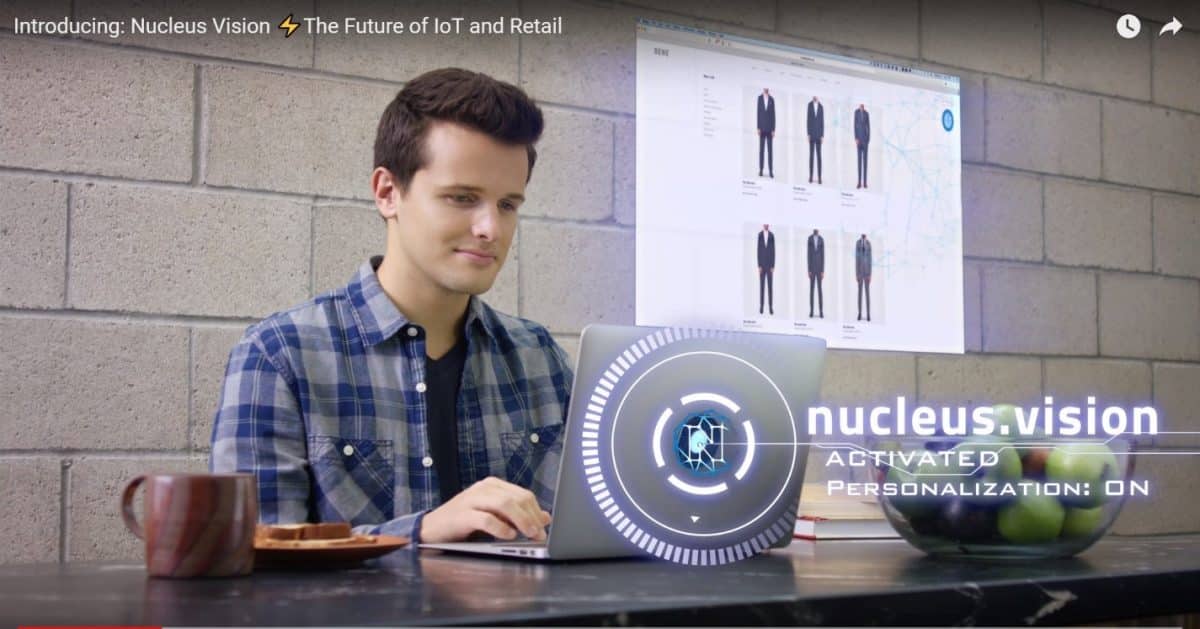
So, it appears that when he went online, his ‘Activated Personalization’ was turned ‘On.’ Neither the video or the narrator add any clarity to what this means, why it was turned on, when it turns off, or how it turns off and what turning it ‘off’ means.

So, when he walks into the store, he gets hit with a ‘Welcome Back’ screen as well as a bonus for entering the store. I’m assuming that the app knew that he was at the store premises because of the Location Services feature (GPS) that’s on most smartphones today (he clearly has an iPhone, the author just wants to put that out there).
The ‘authorize data exchange’ question makes more sense to me now too. It appears that in order to receive rewards, he must authorize the transfer of his data.
So, at least the customer/user (technically the product since this is geared toward retailers) has some sort of control over his fate (not sure how much and I definitely don’t think that information can be revoked if someone does authorize their info and then later regrets it).
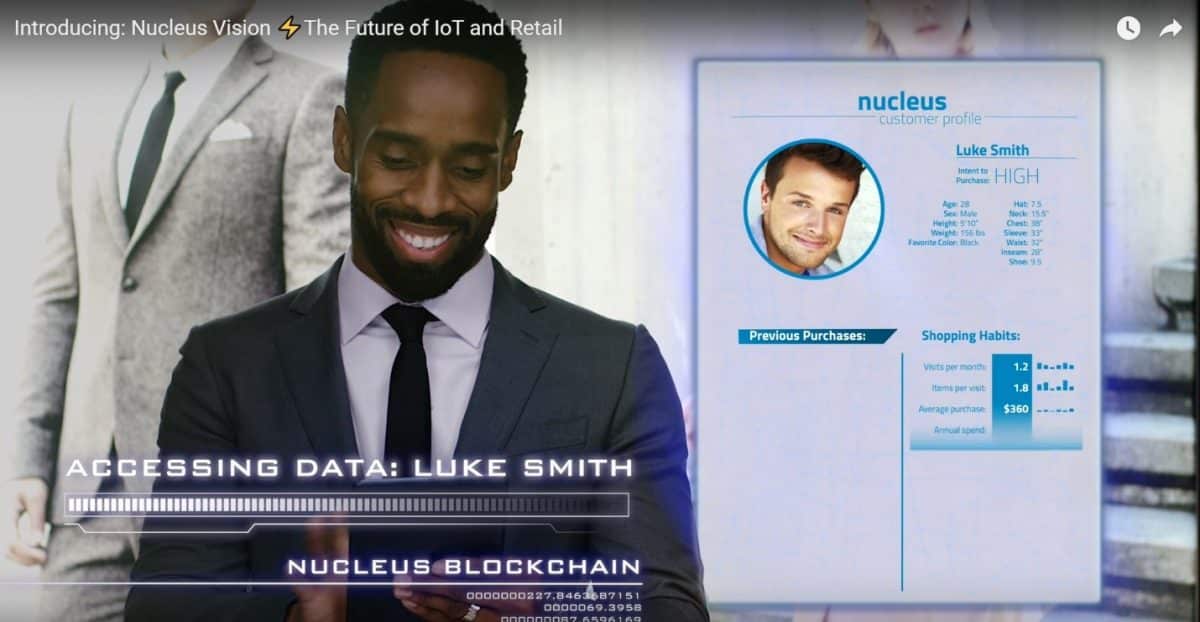
Here’s the retail associate that’s receiving the information about the customer that just entered into the store. I’m guessing the big grin on his face is the smile of ‘Yes! I’m about to make a load of money because I know all of his personal preferences and what he’s looking for!’ (Just guessing here).
Impressions Thus Far
In terms of the quality of the video, the shooting, and the actors together – the video gets an A+. This is probably one of the better-composed videos that you’ll see for any crypto project out there, no doubt.
The video definitely reflects a level of care and precision that shows that this project is being run in a clean manner. The author is not sure what other way to describe it. Some other cryptocurrency projects that the author has reviewed are just sloppy – their website is disorganized, the whitepaper jumps from place to place, the video (if they have one) doesn’t really explain what’s going on, or it’s something that looks like it was clearly sent to some animator first. So, kudos to the nCash team on those fronts.
A More Critical Look
The narrator was more of a distraction to the video than anything. The inane, existential line of questioning that played over top of the video was annoying and felt like someone that was trying too hard to be ‘deep,’ just the author’s personal opinion. But that’s neither here nor there.
There were and still are things in the video that just aren’t clear. However, the general gist of what nCash is providing was conveyed. It looks like they facilitate the exchange of information between users without being an ‘intermediary’ in the way that they aren’t collecting information from users and selling it in the way that Facebook and Google do, but instead they allow the users on the network themselves to sell their data to other retailers in exchange for some nCash.
Honestly, this is a solid idea. The author thinks that if this project ever is erected and gains any steam, then they will face stiff competition from forces like Google and Facebook that will want to ensure that they maintain domination of the data selling market. It should come as no surprise that Facebook and Google make billions off of selling users’ data and it’s more than likely that they will do everything in their power to ensure that they continue to do so.
These companies also have the exposure, economies of scale, infrastructure, and technical know-how to duplicate the nCash product and completely expel them from the market if need be. However, none of that is happening right now, and we still haven’t finished evaluating whether this project will be viable in the long-term just yet.
More Research
To get a better understanding of what the hell this is and how it works, we took to Google. Here’s something we found out of a pretty well-written article promoting the technology:

Source: https://bitcoinexchangeguide.com/nucleus-vision-ico/
Okay, here’s what doesn’t make sense to the author – “No application is needed for the customer. They don’t need to install anything new on their devices to get the offers sent to them. There is also no Wi-Fi or Bluetooth needed for it to operate. It doesn’t require verification of GPS even. And the platform for Nucleus.Vision will work with all phones.”
So, how the hell does this thing work, how does it know me and what technology is it using to identify folks?
In order to really assess this, we must take a look at the whitepaper now:
Whitepaper Review
Here’s the formal link to the whitepaper for Nucleus Vision (nCash).
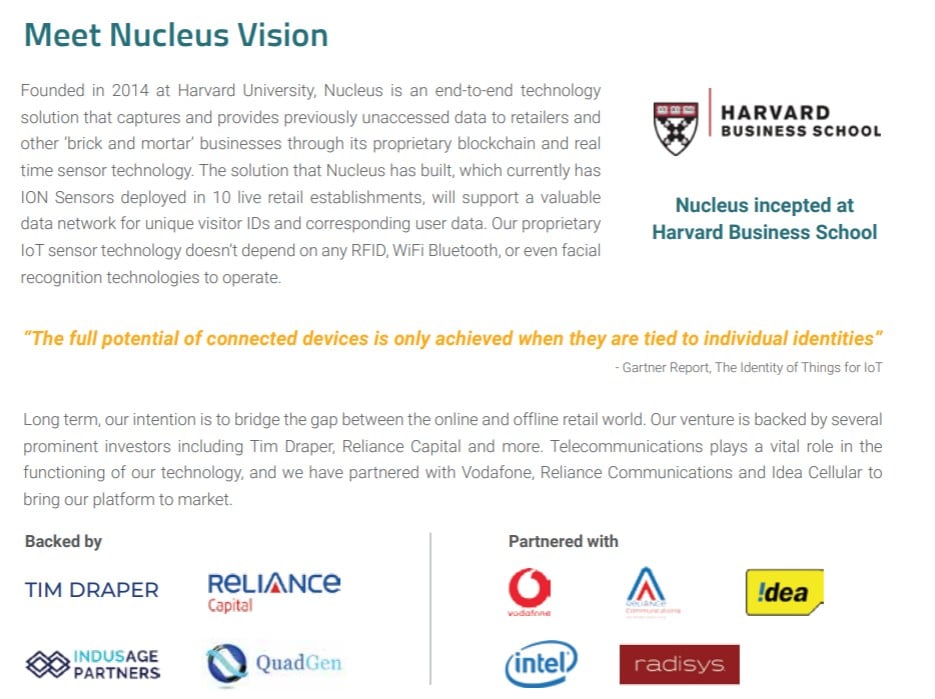
So, we finally get a more in-depth description of the origin of this project. The whitepaper says right off back,
“Founded in 2014 at Harvard University, Nucleus is an end-to-end technology solution that captures and provides previously unaccessed data to retailers and other ‘brick and mortar’ businesses through its proprietary blockchain and real-time sensor technology. The solution that Nucleus has built, which currently has ION Sensors deployed in ten live retail establishments, will support a valuable data network for unique visitor IDs and corresponding user data. Our proprietary IoT sensor technology doesn’t depend on any RFID, WiFi Bluetooth, or even facial recognition technologies to operate.”
What are ION Sensors?
So, this is a reiteration of the same claim that we saw above. We decided to go do some preliminary research into what an “ION sensor” is supposed to be, and here’s something that we came upon:

Source: https://bitcoinexchangeguide.com/nucleus-vision-ico/
So, that gave me a good lead to go off of, because when the author initially Googled it, we were having trouble narrowing down results.
The author eventually ran into this site:
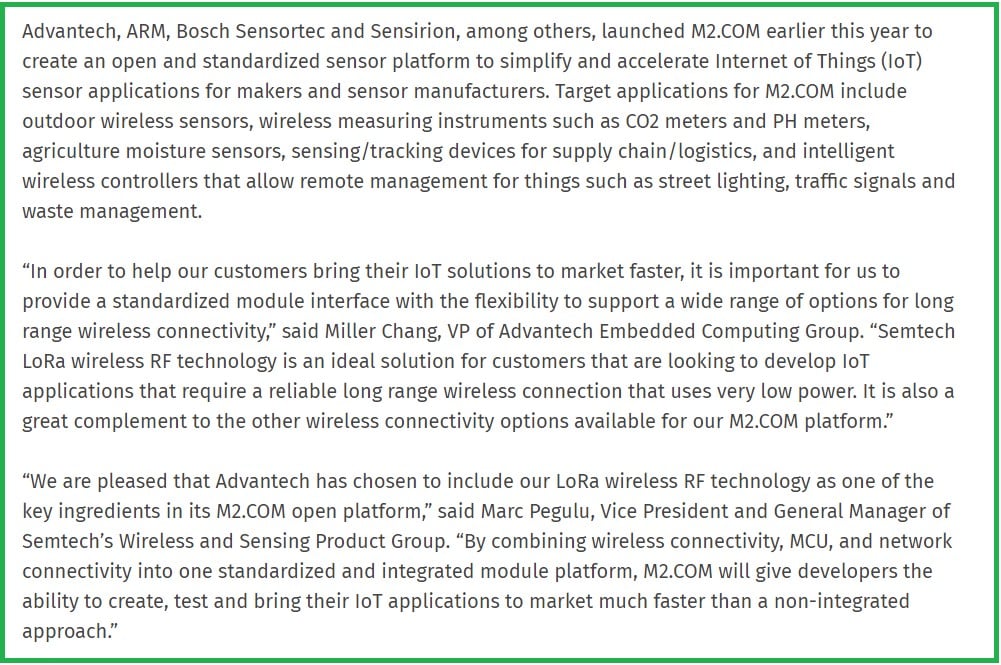
From the author’s prior knowledge of blockchain technology has already taught me a lot about the company, Semtech. Their relation to the field is that the produce semiconductors, which, without getting too deep into it, is pretty much related to the microchips that they use for mining. Blah blah blah.
They’re actually a publicly traded company:

Their competitor, a company called, ‘Taiwan Semiconductor Manufacturing Company Limited’ has been murdering them in the market.
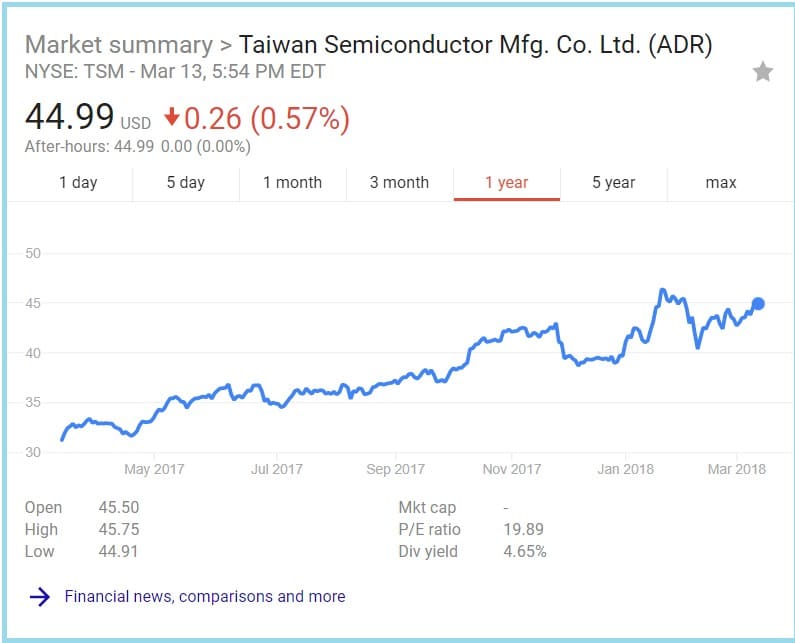
As you can see, TSMC has been kicking ass.
Regardless, Semantech is a legitimate company. They’re publicly traded. However, it looks like this technology is not quite out yet at this point.
Continuing Forward with the Whitepaper Review:
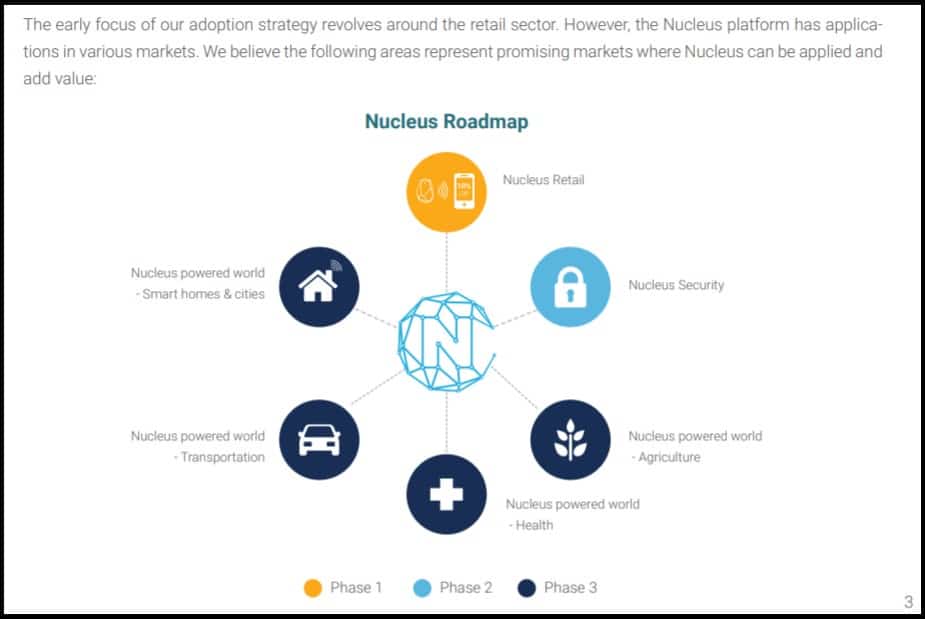
So, it looks like they’re essentially trying to take over the world.
One Big Problem
The idea for nCash appears to be based on installing these sensors primarily at physical locations. The issue is that physical retail locations are closing down en masse because no one is shopping there anymore.
Here are a few excerpts from an article published in The Atlantic in 2017:

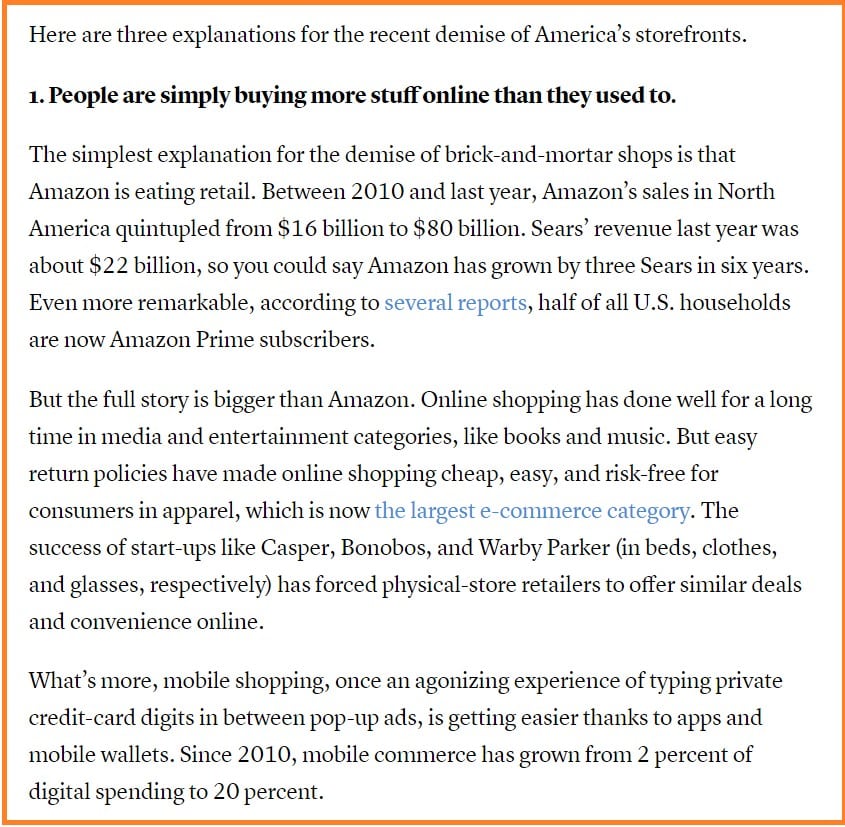
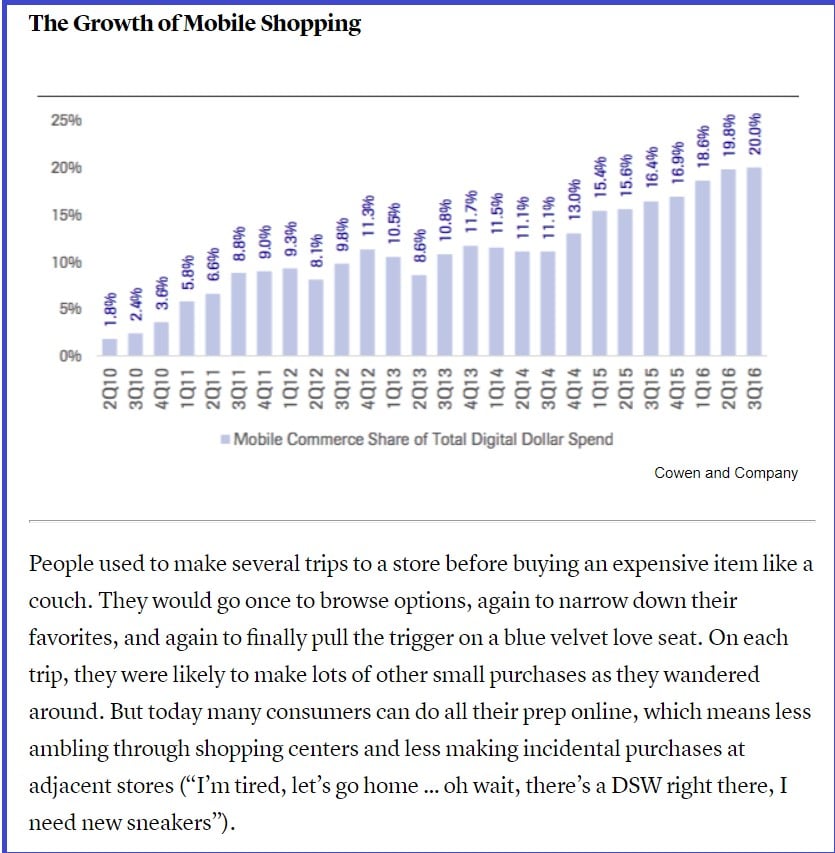
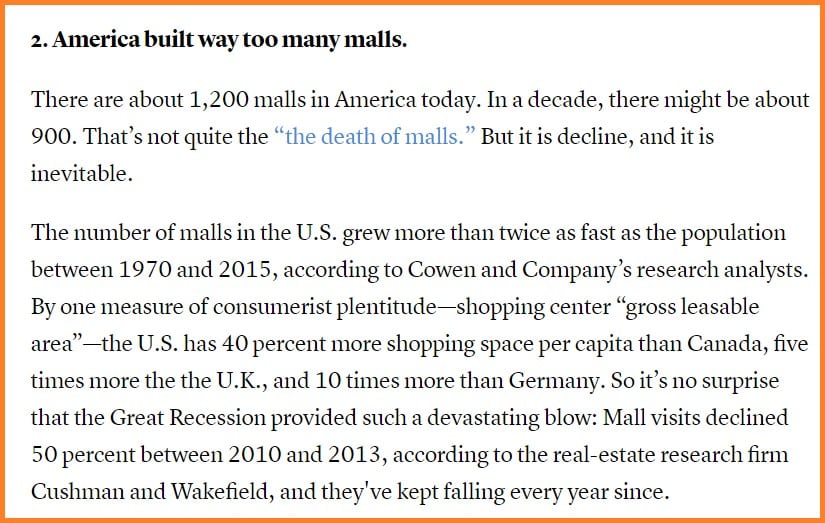
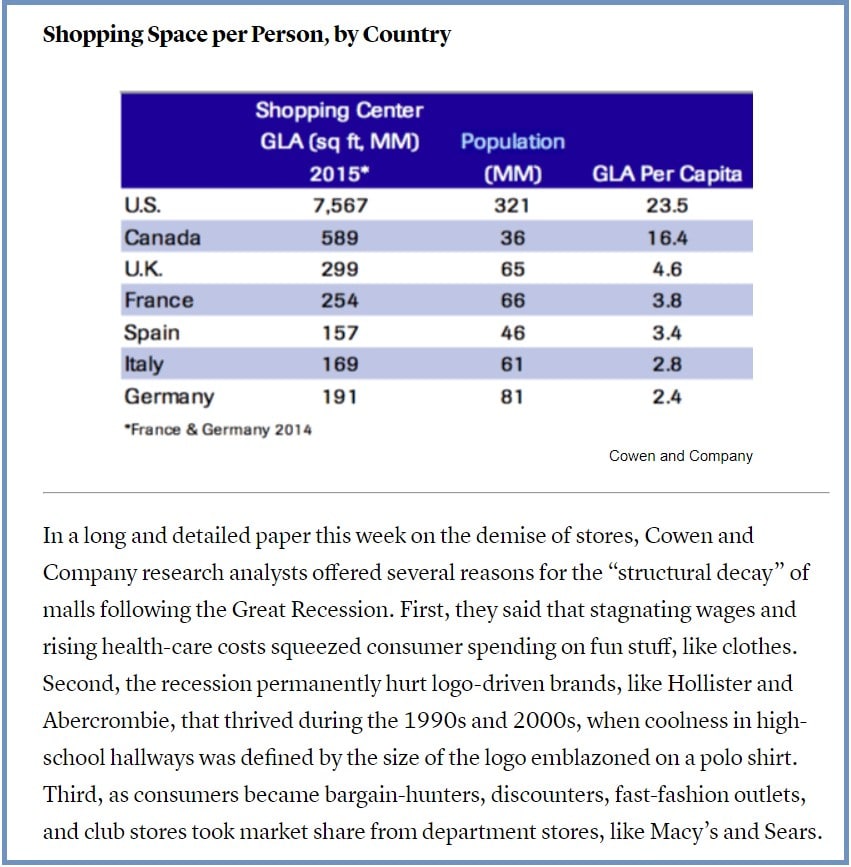

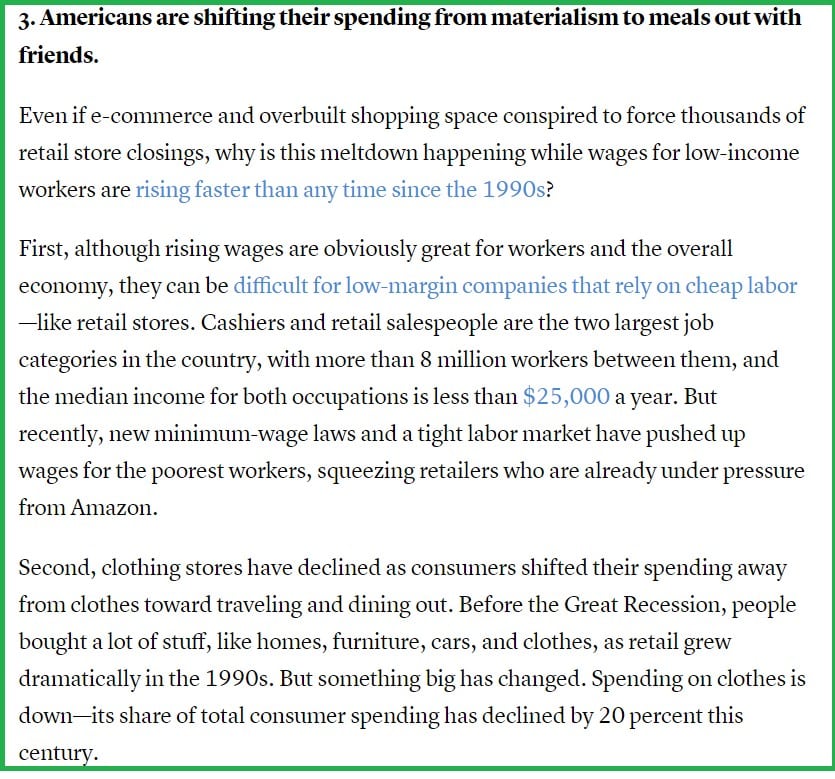

Source: https://www.theatlantic.com/business/archive/2017/04/retail-meltdown-of-2017/522384/
Several other articles have covered the extraordinary decline of physical retail locations in great detail (all written in 2017):
- https://psmag.com/news/the-long-and-painful-decline-of-the-retail-store
- https://www.forbes.com/sites/stevendennis/2017/02/16/what-if-retail-traffic-declines-last-forever/#3a13b89662c0
- https://www.huffingtonpost.com/sharifa-murdock/4-reasons-the-retail-indu_b_9142282.html
- http://www.colliers.com/-/media/files/marketresearch/unitedstates/2017-research-reports/2017-retail-spotlight-report-globaldata.pdf
- https://www.wsj.com/articles/in-store-declines-drag-down-traditional-retailers-1483731326
- http://www.dmnews.com/marketing-strategy/the-decline-of-physical-retail-may-be-an-omnichannel-opportunity/article/678089/
- https://www.investors.com/research/industry-snapshot/retail-snapshot/
RFID Technology
So, one thing that was mentioned as part of the whitepaper was the fact that the technology does not use RFID technology.
However, this may not be an advantage in any way. In fact, RFID was scrapped by many other companies a long time ago.
Was it because the technology sucks? Absolutely not. It was because people were concerned about the privacy issue.

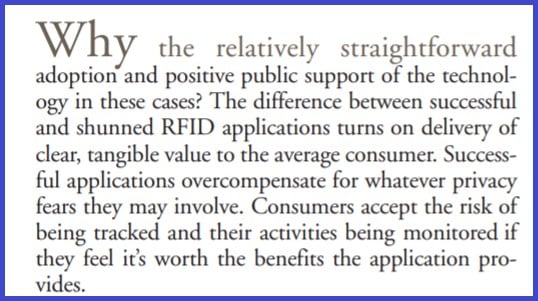
Source: http://pld.cs.luc.edu/courses/ethics/spr07/rfid/eckfeldt.pdf
However, the articles do go on to state that, “The key to a successful RFID application is how it considers the equation from the consumer’s point of view. Consumers need to calculate their own delivered value and risk exposure before they willingly use the system.”
Privacy Concerns
What’s the Point Here?
Okay, let’s zoom out here for a second. We know that nChain doesn’t use RFID technology. The author brought that up to provide a case study of similar technology that companies have attempted to implement in the past that have been unsuccessful. However, the primary reason that they were unsuccessful was because they did not take into account the customer’s preferences. nChain, on the other hand, does appear to do this by giving customers the option to ‘authorize’ the release of their information or not.
However, as mentioned before, without an option to revoke this information or restrict the extraction of this data by companies, it could easily end up in the hands of several other retailers that the customer did not authorize the information to be shared with.
For example:
Customer A walks into Barnes and Noble (popular bookstore franchise in the USA). When he walks in, he authorizes the nChain app or whatever it is sending him a notification to release his data regarding his preferences and habits to Barnes and Nobles. He receives a reward for this.
That data that Customer A shared with Barnes and Noble is now the property of Barnes and Noble and they could then re-sell that to other retailers. In fact, they could use nChain specifically to more easily acquire information from customers and then leverage that information to other customers.
What makes this even more problematic is the fact that there are no ‘Terms and Conditions’ that a customer could use to bind the retailer from sharing their information. Thus, there wouldn’t really be any legal recourse for retailers that choose to abuse this technology and make a profit, and, as mentioned before, there is a substantial amount of profit for companies that choose to sell information.
Facebook and Google, though, at the very least, inform you of what they could potentially do with your information through their ToS, ToC and Privacy Policy (even though no one ever reads those things).
This might seem like a relatively minor aspect, but it’s something that could seriously undermine the adoption rate of this technology (if it ever does get adopted).
Back to the Whitepaper (Seriously This Time)
The sentence that the author is about to post on page four reaffirms our fears that nChain is making the fatal error of trying to target physical retail locations.
They state, “For retailers, Nucleus’s IoT solution provides insights into customer behavior that were not previously possible, such as the ability to track customer visits, to aisles browsed and paths taken in-store, favorite products and brands, and predict future customer behavior in-store. This helps create a personalized customer experience that provides for greater customer satisfaction.”
The whitepaper also states a further initiative for Nucleus as well:
“IoT solutions have already penetrated residential and industrial security systems, and it will become a huge opportunity in the coming years. As it stands, the industry is severely lacking a comprehensive and intelligent solution that is also cognizant of privacy. We believe that Nucleus is primed to tackle this problem.
Nucleus’s smart IoT sensors can become an indispensable component of wider residential, commercial and industrial security systems by identifying potential threats and intruders, and securely transmitting this data to concerned authorities over our blockchain network.
This information can be utilized both in real time security, where premises can be monitored for unexpected persons, as well as after an incident, where our IoT sensors can be used to identify attackers. Micro-payments in the form of nCash tokens will enable this secure data transfer across various involved parties and our sensors. Nucleus will enable an ecosystem of secure, trustless, independent, and permission-less exchange of data over blockchain, to help make the world a more safer place for everyone.”
We’ve stated several times why we don’t believe that micropayments will work, and that goes for crypto as well as other methods that are based on ‘traditional’ financial transfer methods, such as PayPal (hint: they attempted it, didn’t work).
How Does it Actually Work?
Here’s an outline of how the actual process is supposed to work:
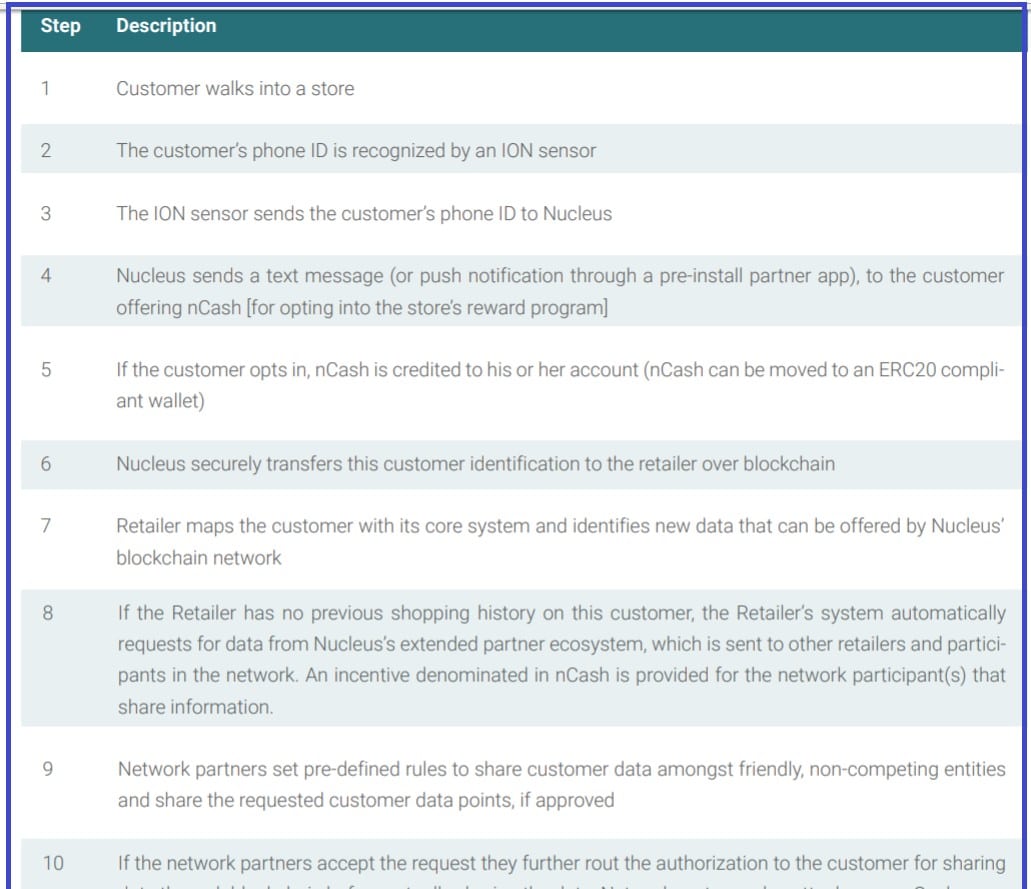
Source: nCash whitepaper
There are a couple of issues here:
- It looks like the ION sensors attempt to identify customers whether they like it or not. This could be problematic and something that could get stores in hot water, creating a reluctance in their willingness to accept it.
- What if someone just leaves their phone home or has another customer’s phone with them? Or just buys a new phone? It looks the process is contingent solely upon the phone itself and not the app. There’s no formal sign-up or anything.
Conclusion
After reviewing the rest of the whitepaper, anything else that can be said would be redundant at this point and probably not worth it because the technology still has quite some time before it fully developed.
Is it a shitcoin? No. Seems legitimate in its construction and the purpose that it’s hoping to solve (assuming that the team actually moves forward with development and doesn’t stall infinitely or derail as other crypto projects have).
Does the author think that it has long-term potential? Hard to say. It has a lot of hurdles to climb. It must:
- Reconcile with the fact that physical retail locations are declining rapidly.
- The biggest potential vendors that they would appeal to for adoption would more than likely construct their own similar app that only works with their own blockchain structure.
- Companies like Google and Facebook have a virtual monopoly (literally) over data aggregation, and they have unique data that nCash won’t be able to aggregate despite their claims for uniqueness.
- Creepy Factor – Knowing that there’s a service that tracks the aisles that you visit in a store, the time of day that you go, etc., is creepy as fuck to a lot of people. Plain and simple. The idea of surveillance is something that more and more people are trying to rally against, and this project’s premise is almost antithetical to the concept embodied within cryptocurrency at this present moment – especially with the recent rise in prominence of privacy-based cryptos such as monero and zcash.
- The lack of control over what happens to the information after it is authorized by the customer to be transmitted to the vendor is troubling, to say the least. The fact that there may not be any recourse or revocation of that information after it is given is yet another problem that has not been addressed either.
- The technology that this is based on does not appear to be in its final stage.
- The premise of how exactly it can identify customers by ‘ID’ is a bit shaky as well. There is a lot of information about what it doesn’t use, not too much about what it does use or how it literally functions.
That concludes our review of nCash for the time being. Make of it what you will. Feel free to reach out with any questions/feedback or corrections if you feel something is wrong in here.
The post Cryptocurrency Review: Nuclear Vision (nCash) appeared first on BTCMANAGER.
Source and More information: Cryptocurrency Review: Nuclear Vision (nCash)
Author: BTCManager.com
Leave a Reply